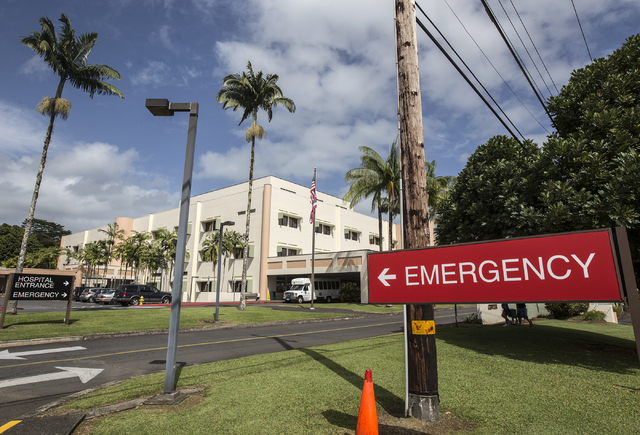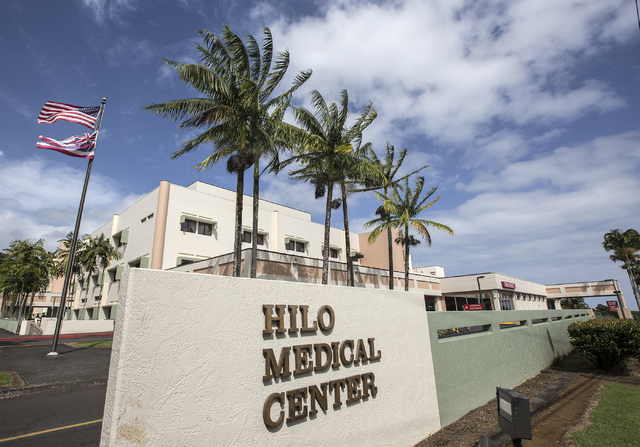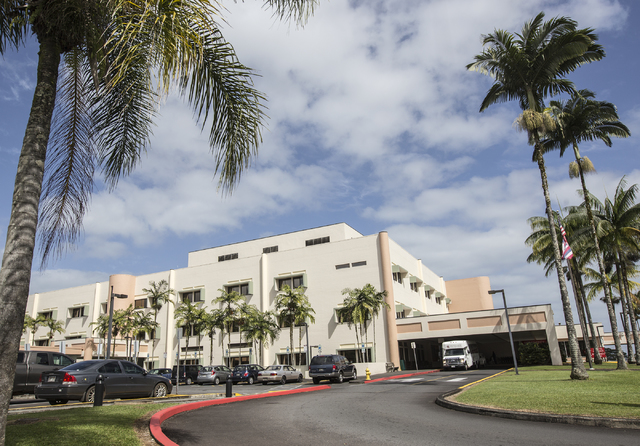Hilo Medical Center will soon solve two key medical-specialist shortages in East Hawaii. ADVERTISING Hilo Medical Center will soon solve two key medical-specialist shortages in East Hawaii. Both cardiologists and dermatologists are rare on the Big Island, as anyone who
Hilo Medical Center will soon solve two key medical-specialist shortages in East Hawaii.
Both cardiologists and dermatologists are rare on the Big Island, as anyone who has tried to get an appointment is well aware.
But the hospital expects to hire two new cardiologists with “boots on the ground” by mid-year.
They’ll be on-staff and work in concert with telemedicine. The telemedicine arm of cardiology will provide non-urgent services such as followups.
Hilo Medical Center CEO Dan Brinkman said during a telephone interview with the Tribune-Herald that three cardiologists will be interviewed in February and a fourth in March.
So he’s confident the two openings will be filled.
The hospital’s previous cardiologist left for the mainland. In the interim, the hospital is using temporary cardiologists until permanent ones are hired.
Beyond cardiology, another much-needed service on a Pacific island where people get lots of sun exposure is dermatology.
Brinkman said Hilo Medical Center plans to attack the shortage of dermatologists with telemedicine.
“We’re working hard to set up the ability to have those consults available through our clinics,” he said.
Hopefully, he said, telemedicine has the potential in the relatively near future to turn medical clinics into “virtual multi-specialty clinics” where patients can make appointments to see a specialist, such as an endocrinologist, dermatologist, allergist or cardiologist.
Telemedicine has been around for quite a while. But it hasn’t been made user-friendly, Brinkman said. That’s changing, just like smart phones got easier to use.
The idea is for a patient to enter a room and “instead of the doctor coming through the door, he pops up on the screen,” Brinkman said.
The problem, of course, remains how to pay doctors and health systems for providing the service. Currently, Brinkman said, Medicare and Medicaid don’t pay enough to make telemedicine a worthwhile investment for health systems.
He is hopeful that will change.
Hilo Medical Center, like hospitals nationwide, is looking for new ways to deliver care that will work better in today’s world. Even if a hospital offers higher salaries, the problem of more patient demand than doctor availability doesn’t go away.
“I don’t care how much money we throw at it,” Brinkman said, shortages remain. “We need to come up with a new way to change, and solve, the problem.”
Already, telemedicine is making a difference at the hospital.
For example, patients experiencing stroke symptoms can get a quick CT scan and be seen by an Oahu neurologist through a two-way camera when needed.
Often, symptoms are so clear that the ER physician doesn’t need to consult with a neurologist.
But when a consultation happens, a rapid decision can be made to give a clot-busting drug, transport the patient for neurological surgery, or to take other actions.
Neurology is one specialty for which a solution is not near, Brinkman said.
The problem, he said, is neurologists typically serve non-urgent patients to stay financially secure, whenever no emergency-room cases are underway.
But the Big Island doesn’t need enough non-urgent neurology services to make a neurologist’s move financially viable.
The Legislature might need to find a way to subsidize part of one’s salary.
“The No. 1 specialist that I think would be good to have here would be a neurosurgeon,” Brinkman said.
But he noted the Legislature, so far, has shied away from subsidizing any particular specialty.
Reach Jeff Hansel at jhansel@hawaiitribune-herald.com.





